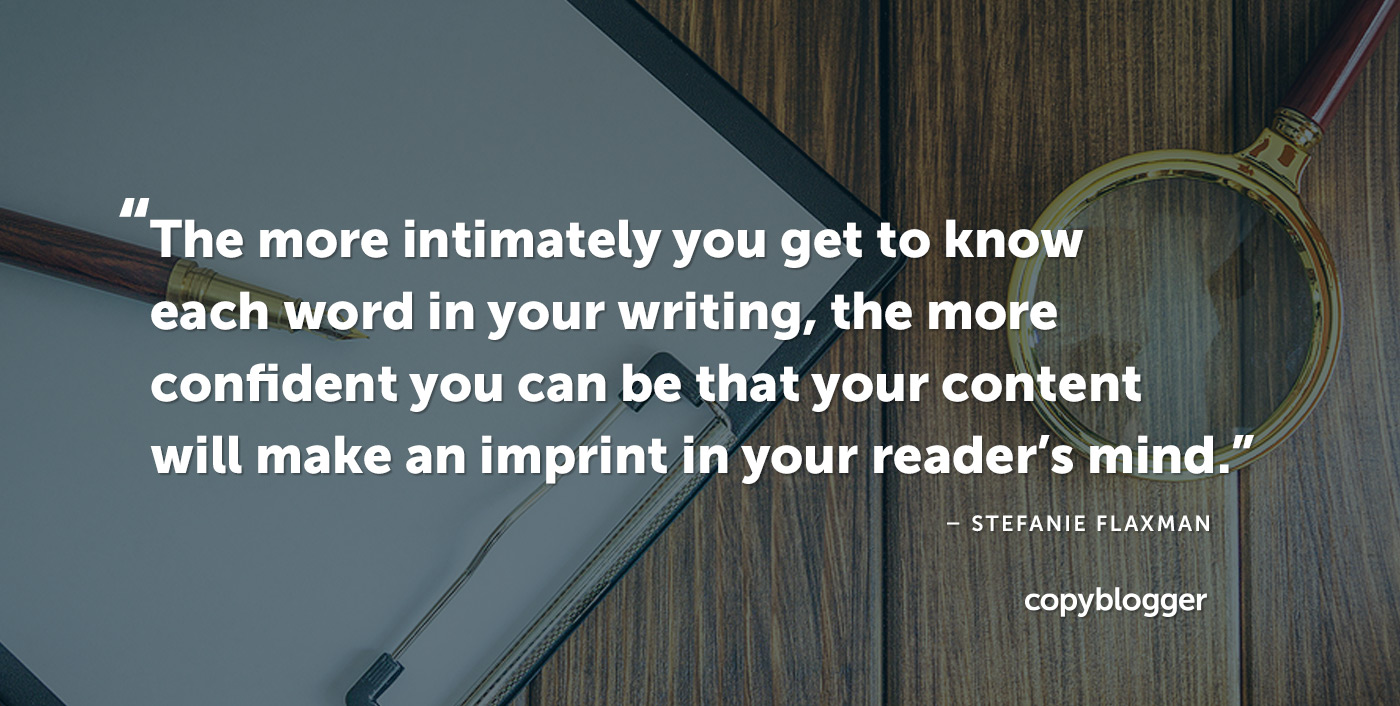Ready to start your search for the perfect words?
Here are 33 instances where you can opt for descriptive language that reveals your point of view, rather than an obvious choice that doesn’t enhance your writing voice.
It’s not always appropriate to get super detailed, but don’t settle for generic phrases because you’re afraid of excluding people who don’t have the same taste.
The more intimately you get to know each word in your writing, the more confident you can be that your content will make an imprint in your reader’s mind.
You’re hooking your ideal reader on your writing, so they become a part of your audience.
For each descriptive language category below, review how the different examples of compelling words alter a reader’s experience with your text.
Coffee
Pour over, sparkling espresso, or cold brew?
Tea
Earl grey with cream and sugar, yerba maté, or chamomile?
Alcohol
IPA, gin and tonic, or Jack Daniel’s?
Water
San Pellegrino, flat, or Bubly?
Writing utensils
Black ballpoint, red felt tip, or mechanical pencil?
Trees
Cypress, palm, or sycamore?
Flowers
Cherry blossom, rose, or daisy?
Houses
A-frame cabin, condo, or mansion?
Pets
Maine Coon, Pomeranian, or American Pit Bull Terrier?
Chairs
Desk, bean bag, or bar stool?
Exercise equipment
Kettlebell, yoga mat, or Peloton?
Glassware
Mason jar, Champagne flute, or martini glass?
Plates
Plastic, paper, or ceramic?
Cereal
Frosted Flakes, Cheerios, or MUSH Overnight Oats?
Yogurt
Plain Greek, low-fat blueberry, or vanilla soy?
Meat
Wagyu beef sliders, patty melt, or Beyond burger?
Art
Warhol, Renaissance, or sacred geometry?
Candles
Tealight, taper, or pillar?
Clothing
Suit, sweats, or shawl?
Cosmetics
Drugstore, Sephora, or Yves Saint Laurent?
Jewelry
Antique, vintage, or artisan?
Perfume
Chanel, Bath & Body Works, or patchouli?
Eyewear
Stainless steel, plastic, or frameless?
Masks
Cloth, N95, or bandana neck gaiter?
Films
Casablanca, Psycho, or Fight Club?
Television shows
Cobra Kai, I Love Lucy, or Battlestar Galactica?
Music
The Beatles, Joy Division, or Public Enemy?
Computers
Desktop, laptop, or tablet?
Phones
Android, iPhone, or Nokia flip phone?
Fans
Ceiling, tower, or bladeless?
Documents
Digital, lined notebook, or copy paper?
Offices
Taupe walls and windowless cubicles, high ceilings and an open floor plan, or a makeshift workspace on a dining room table?
AI
Alexa, Google, or Siri?
“Easy reading is damn hard writing …”
The subheadline above is often attributed to Nathaniel Hawthorne, but since we can’t always verify the accuracy of a quote or source, I’d like to share the lesser-known second half of that sentence.
“Easy reading is damn hard writing … so you’re subscribed to Copyblogger, right?”
We help turn writers into well-paid, well-respected, working writers. Join us.


Reader Comments (3)
Great article, Stefanie! Words have a great impact on your reader and you’ve pointed that out in the best way possible.
Great tips. I don’t much get the opportunity to be descriptive with the content I write for the company I work for. It’s an online pharmacy, so we tend to have to be very clinical and to-the-point. Thankfully, though, the introductions are a great place to flex the creative muscles and set the scene nicely.
Back in 2011, I wrote a blog about using unique and descriptive words to help your apartment communities stand out from the competition. In the post, I added a list of what I now refer to as “wow words” that I utilize almost daily when writing ad copy, creating content, dreaming up romance paragraphs, and coming up with a unique list of amenities and features to describe our apartment homes and communities. In addition to descriptive phrases, I’ve included a list of headings/taglines and transitional phrases to amp up your verbiage.
This article's comments are closed.